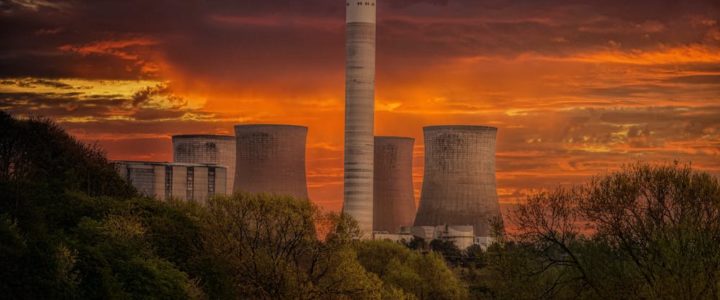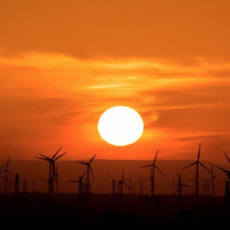
It’s a precious few that haven’t heard of Albert Einstein’s landmark equation: E=MC2. The value of this elegant equation is that it has revealed that matter and energy are intimately related. It has been responsible for enormous advancements in science. Among the most prominent examples would be the creation of the atomic bomb during World War II by the United States.
 Fearful that German scientists were working day and night to build a nuclear weapon, Einstein himself urged President Roosevelt in a letter to get there before the Nazi’s did. It was his theory of special relativity that held the key that unlocked the enormous power contained in the smallest treasure chest imaginable: the atom. When J. Robert Oppenheimer, the head architect of the atomic bomb, witnessed the raw power he unleashed unto the planet, the only words appropriate enough for the occasion came from a thousands year old spiritual text: “Now I am become Death, the destroyer of worlds.”
Fearful that German scientists were working day and night to build a nuclear weapon, Einstein himself urged President Roosevelt in a letter to get there before the Nazi’s did. It was his theory of special relativity that held the key that unlocked the enormous power contained in the smallest treasure chest imaginable: the atom. When J. Robert Oppenheimer, the head architect of the atomic bomb, witnessed the raw power he unleashed unto the planet, the only words appropriate enough for the occasion came from a thousands year old spiritual text: “Now I am become Death, the destroyer of worlds.”
Oppenheimer wasn’t exaggerating: for the first time in history, mankind was capable to extinguish life on this planet in one fell swoop. That reality has played prominently in the public imagination throughout the decades and was perceived as an ever-present threat during the Cold War. It sent millions of school children underneath their desks in the United States for periodic drills to help prepare them for when the bomb dropped. Even after the Iron Curtain fell, the potential for massive destruction has born an anxiety over nuclear power even while it boasts the potential of producing enormous amounts of energy for productive use.
Currently, 98 nuclear reactors produce 20% of the electricity in the United States; that’s a whopping 805 terawatt hours (TWh)! It claims the bronze in the proverbial Olympic race, coming in third after gas and coal as top producers of electricity. In France, however, nuclear is king and meets 75% of the country’s electrical needs. It’s a tough dilemma. On the one hand, the appetite for energy will only keep growing as time goes on, and the reliance on energy provided by fossil fuels seems to be a marker of a primitive society.
On the other hand, it’s not good form to give toddlers power tools with which to play. There have been a couple accidents at nuclear power plants over the years, the most recent being the one that occurred in Fukushima, Japan when an earthquake struck in 2011. When an atom is split, an enormous amount of heat is released. That heat is used to turn water into steam, which is harnessed to spin turbines that create electricity. It’s essential that the temperature of a nuclear core is regulated constantly so that it doesn’t overheat. This is done by pumping water through the nuclear core, effectively lowering the temperature in much the same way a cold shower can cool you down on a hot summer’s day.
On March 11, 2011, the Great East Japan Earthquake with a 9.0 magnitude caused a 50-foot tsunami to strike mainland Japan. The natural disaster caused the power grid to fail and, without electricity, the pumps that brought water to the nuclear cores at Fukushima were inoperable. All three cores melted within the first three days.
The Fukushima-Daiichi accident registered a 7 out of 7 on the International Nuclear and Radiological Event Scale (INES) and is thus categorized as a “major accident”. Extraordinary amounts of radioactivity was released into the environment in the subsequent days and, month’s later, scientists even began to pick up traces of the radioactivity off the West Coast of the United States.
 Such is the state of affairs of nuclear power. The benefits are hard to deny. With relatively few power plants, enough electricity can be generated to power the entire world with zero carbon emissions. Yet, “What if?” casts a large shadow over its proliferation, and absolutely no one wants nuclear waste to be buried in their back yards; it can stay radioactive from anywhere between a few hours to 48,000 years.
Such is the state of affairs of nuclear power. The benefits are hard to deny. With relatively few power plants, enough electricity can be generated to power the entire world with zero carbon emissions. Yet, “What if?” casts a large shadow over its proliferation, and absolutely no one wants nuclear waste to be buried in their back yards; it can stay radioactive from anywhere between a few hours to 48,000 years.
Advocates of nuclear energy are quick to point out that for the nearly 70 years that nuclear power has been in production, the cumulative waste has only been enough to fill a football field to a depth of 10 yards. By comparison, coal powered plants produce that much waste each and every hour of the 24. As a reminder, solar and wind energy has filled exactly zero football stadiums with waste and, like nuclear, does not contribute to carbon emissions.


